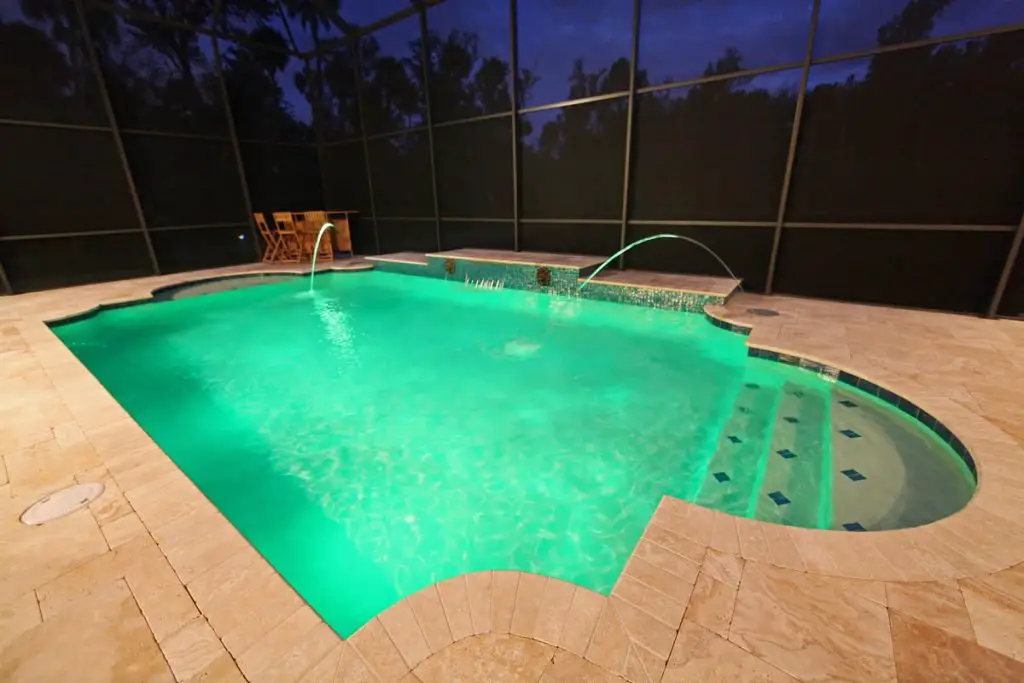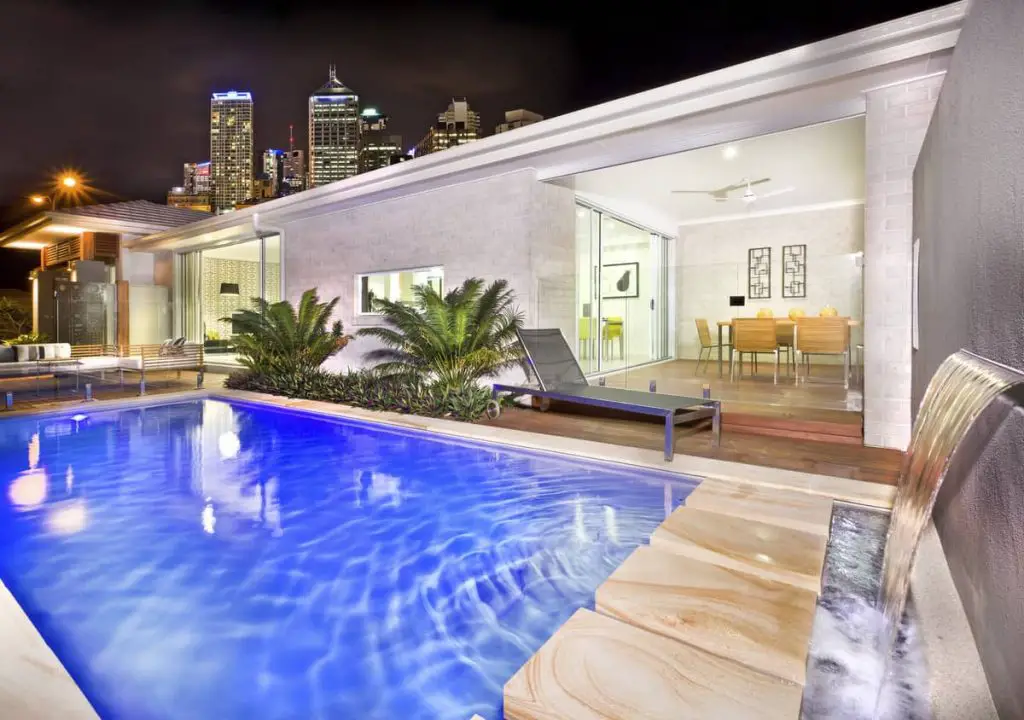Pools are an expensive luxury, both in buying and in the pool’s upkeep. There are often underwater lights in pools, and when the bulbs burn out, it can cost between $30 to $40 for a replacement pool light and up to $500 for a professional to replace it. This begs the question of whether or not you can use a cheaper, standard floodlight instead of a pool light.
You can technically replace a pool light with a regular flood light, but it is not recommended. Pool lights are created specifically to be used underwater, where flood lights are not. They also have thermal breakers to turn the bulb off when it generates too much heat.
This article will explain why you shouldn’t replace your pool light with a floodlight. I will also provide the requirements of pool lights, steps on choosing the right pool light, and short instructions on how to replace your pool light.

Why You Shouldn’t Use Regular Flood Lights As Pool Lights
Regular floodlights with 120V and an R40 base can technically be threaded into a 120V pool light with an R40 socket, but it is not recommended for a few reasons.
Pool lights have an “air pocket” sealed with a resin material to protect the electrical wiring. This “air pocket” is used to stop water intrusion from the lens gasket of the bulb. Regular flood lights do not have this “air pocket,” so there is no protection from water intrusion when a floodlight is installed underwater.
Pool lights also have a thermal breaker- a heat-sensing cut-off device. According to the design operating temperature, this thermal breaker turns off the bulb if the internal heat gets too hot. Regular flood lights generate heat that exceeds a pool’s operational design temperature rating.
What Is the Difference Between Pool Lights and Floodlights?
Pool lights are designed specifically to be used underwater, whereas floodlights are designed to be used outdoors. There are also specific requirements that pool lights need that are not required for floodlights.
Requirements for Pool Lights
There are some requirements a pool light must follow to be able to be installed in pools:
- Voltage: Depending on the state or region you live in, your pool light voltage has to be either 12V or 120V. A 120V bulb will not work in a 12V pool and vice versa.
- Wattage: The bulb’s wattage depends on the type of light you use. If you use incandescent light, the wattage will generally be between 100W to 500W. An LED light will typically have wattage between 30W and 90W.
- Cord length: Pool lights have a cord to connect the light to the junction box, generally between 15 feet and 150 feet (4.57 and 45.72 meters) long. To determine how long your cord needs to be, add 10 feet (3.04 meters) to the distance between the pool light to the power source.
How To Change Your Pool Lights
Do not attempt to change your pool lights without professional help if you are unfamiliar with how to work electricity, especially since there’s water involved.
If you feel comfortable changing your pool lights yourself, there are seven steps to replacing your lights.
1. Purchase the Correct Equipment
Before changing the pool light, you need to buy the correct bulb and lens gasket. There is no standard light bulb that can fit all pool outlets, so you need to know some information:
- Manufacturer name
- Light bulb model number
- Voltage and wattage
This information generally is on the back of the lighting house.
2. Find the Necessary Information
If you can’t find this information, there are some other steps you can take to find it out.
You can try to look for a part number on the bottom of the bulb or on the lens. Some manufacturers have the part numbers molded into other bulb parts. These numbers will help you identify the information.
To find the gasket size, try measuring around the outside of it. If it’s the same size as your current pool lights, you should be able to use it.
3. Turn Off the Electricity to the Pool Area
After buying the replacement bulb and a new gasket, take them, a few differently shaped screwdrivers, a circuit tester, and some fresh towels to the side of the pool.
Turn off all the power at the circuit breaker- you must do this for your safety. You can use the circuit tester to ensure that the electricity has been turned off successfully.
4. Remove the Burnt-Out Pool Light
Next, remove the pool light casing, or “light niche.” There’s likely a single screw at the top. To remove the casing, find the screw there and remove it.
When you pull the light fixture out of the niche, you should see a cord that will allow you to place the light on the pool deck. Check the length of the cord, so you know how much is necessary, and you can replace it exactly as it was when installing the new bulb.
5. Remove the Face Ring, Lens Gasket, and Bulb From the Pool
The last step in removing things from the pool is to remove the face ring, lens gasket, and bulb. When removing these items, be careful. Corrosion may have occurred as many pool lights leak, so make sure you use the correct tools and equipment.
Use a towel when unscrewing the burnt-out light bulb. Do not use anything hard when you clean the surface housing- you don’t want to scratch or bend it.
6. Screw in New Bulb and Check for Leaks
The next step is to replace the light bulb. Make sure you do not tighten it too much. After installing the new bulb, install the new lens gasket and reassemble the light fixture.
Next, with a friend or family member’s help, turn on the electricity and make sure the light turns on. The light should still be on the pool deck at this time.
After making sure it works, turn off the electricity again. Place the bulb under the water for a few seconds to check for leaks. There may be a few bubbles, but not too many; the bubbles should stop after a moment.
7. Put the Bulb in the Pool and Turn On the Electricity
After ensuring there is no leakage, put the new bulb back in the pool. Then, replace everything the way it originally was. After you’ve reinstalled everything, turn the electricity back on, and you’re good to go!

Conclusion
Pools are fun to swim and play in, but they are costly to upkeep. Pool light bulbs going out is one of the most common issues you have to deal with, and they can be expensive to replace between the special pool bulb and the cost of professional installation.
While you can technically replace a pool light bulb with a cheaper, regular floodlight, it is not recommended because floodlights are not created to be used underwater.
